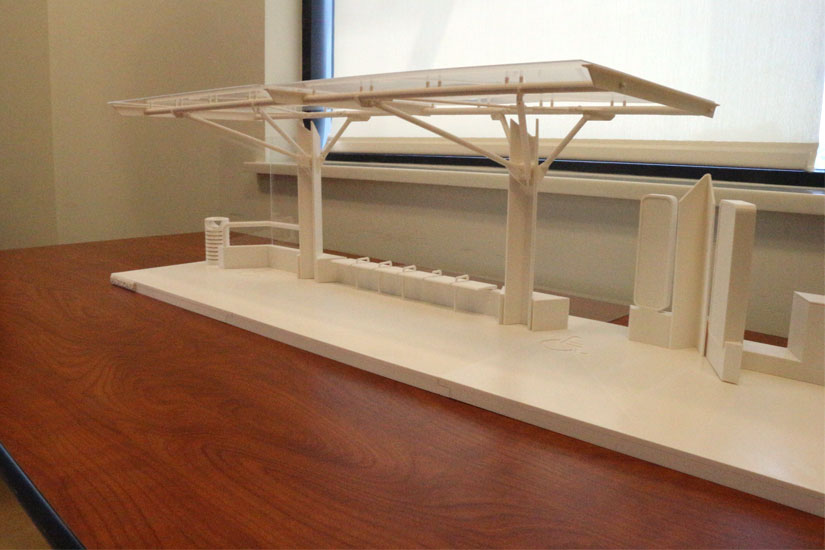 ARLnow.com, a local news site for Arlington, Virginia, updated residents on the costs of new bus stops proposed along Columbia Pike, a major artery running right up to the Pentagon. As opposed to the $1 million prototype bus stop that I wrote about last year, Arlington County officials released an updated design with a new cost per stop: between $362,000 and $672,000. The three newly termed “transit centers” look similar to the “Super Stop” design but are shorter in height, have wider canopies, and have side windscreens. Each stop will have a different cost, according to its size:
ARLnow.com, a local news site for Arlington, Virginia, updated residents on the costs of new bus stops proposed along Columbia Pike, a major artery running right up to the Pentagon. As opposed to the $1 million prototype bus stop that I wrote about last year, Arlington County officials released an updated design with a new cost per stop: between $362,000 and $672,000. The three newly termed “transit centers” look similar to the “Super Stop” design but are shorter in height, have wider canopies, and have side windscreens. Each stop will have a different cost, according to its size:
- Single-Sized: $362,000
- Standard: $469,000
- Extended: $672,000
The county provided a breakdown in costs for construction and site design and project management, with the latter representing approximately 23 percent of the total cost for the small- and medium-sized stations.
This all might be an improvement but taxpayers who answered a poll on the site say it’s still too high a cost:

Area residents questioned why existing bus stop designs (the classic three-sided, glass enclosures) are being replaced for a more expensive, unproven design (especially since the new design still does not protect those waiting from the elements. Others voiced concerns over the still-high costs. One commenter wrote that a standard stop costs $30,000 and some can cost as much as $58,000 across the border in Maryland. The question I ask Arlington Board members is, are the artsy designs of the stops worth spending millions of local taxpayer dollars instead of putting those funds towards other concerns or taxpayer relief?
On a county-level, the cost of the overall effort went from $20.9 million to $12.4 million, a 40 percent decrease. Yet, those savings may be swept away as the Washington Post just reported that the Columbia Pike streetcar – a major reason the county cites for updating the bus stops -- will cost $358 million, or $100 million more than the county’s previous projection. On top of all of this, taxpayers across the country need to keep any eye on this issue because 48 percent ($140.5 million) of Arlington County’s share of the expenses are expected to come from the federal government. The issue comes down to whether Arlington officials are doing what’s best for residents or just building pretty things that will ultimately go underused.

